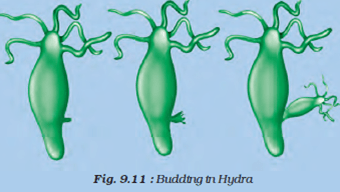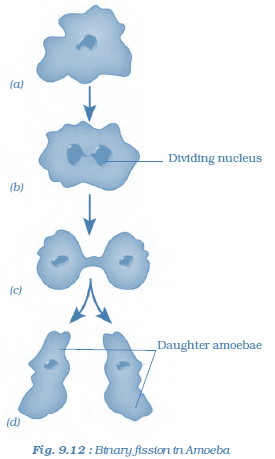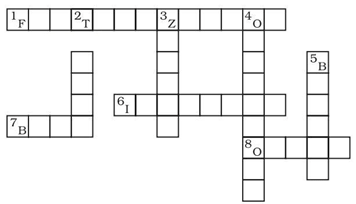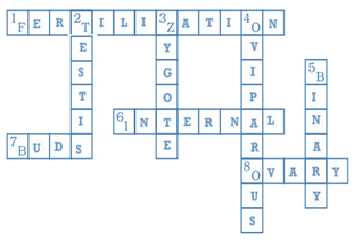NCERT Solutions for Class 8 Science Chapter Chapter 6 Reproduction in Animals help students to clear all their doubts. These solutions provide you with the answers to all the questions given in the NCERT textbook. CBSE Class 8 Science Chapter 6 Solutions is prepared by expert teachers as per the latest CBSE syllabus and guidelines.
Solving NCERT Solutions will help you to understand the concepts related to Reproduction in Animals. NCERT Solutions for Class 8 Science Chapter 6 contains an in-depth explanation of each question of NCERT Science textbook. These solutions cover important concepts in different patterns like MCQs and short answer questions, worksheets and more and help you top score good marks in the exam.
Class 8 Science Reproduction in Animals Questions and Answers
Exercise Questions
Question 1: Explain the importance of reproduction in organisms.
Answer: Importance of reproduction in organisms are as follows
- Reproduction is essential for the continuation of a species.
- It ensures the continuation of similar kinds of individuals, generation after generation.
Question 2: Describe the process of fertilization in human beings.
Answer: There is sexual reproduction in human beings. Male reproductive organs produce sperms (male gametes) while the female gametes produce ova (female gametes). The sperms are ejected inside female bodies where they fuse with ovum and forms zygote (called internal fertilization). The zygote begins to develop into an embryo which attaches to the female uterus wall. The embryo further multiples into many cells and develops further into a small baby called a foetus.
Question 3: Choose the most appropriate answer:
(i) in female body.
(ii) outside female body.
(iii) in male body.
(iv) outside male body.
Answer: (i) in female body.
(b) A tadpole develops into an adult frog by the process of
(i) fertilization.
(ii) metamorphosis.
(iii) embedding.
(iv) budding.
Answer: (ii) metamorphosis.
(c) The number of nuclei present in a zygote is
(i) none.
(ii) one.
(iii) two.
(iv) four.
Answer: (ii) one
Question 4: Indicate whether the following statements are True (T) or False (F):
(a) Oviparous animals give birth to young ones – False
(b) Each sperm is a single cell – True
(c) External fertilization takes place in frog – True
(d) A new human individual develops from a cell called gamete – False
(e) Egg laid after fertilization is made up of a single cell – True
(f) Amoeba reproduces by budding – False
(g) Fertilization is necessary even in asexual reproduction – False
(h) Binary fission is a method of asexual reproduction – True
(i) A zygote is formed as a result of fertilization – True
(j) An embryo is made up of a single cell – False
Question 5: Give two difference between a zygote and a foetus.
Answer:
| Zygote | Foetus |
| It is the earliest stage of development | It is the last developmental stage of an organism |
| Zygote is single cellular | Foetus is a multicellular |
| The zygote divides several times to form an embryo | The foetus stage occurs after the embryo stage. |
| Well defined body parts are absent in zygote | In foetus body parts can be identified. |
Question 6: Define asexual reproduction. Describe two methods of asexual reproduction in animals.
Answer: Asexual reproduction is a mode of reproduction in which only one parent is involved to reproduce offspring. In asexual reproduction, the offsprings produced are exact copies of their parents. It is generally observed in very small-sized organisms. Binary fission, Budding, Fragmentation etc. are examples of asexual reproduction.
Budding: Budding: In budding, the organism develops a bulge called bud which further develops into an adult organism and separates itself from the parent body to lead an independent life. This type of reproduction is shown in Hydra. The following figure shows budding in Hydra.

Binary Fission: It is a type of asexual reproduction in which a single cell divides into two halves. Each of the part gets one nucleus and develops into separate individual Organisms that reproduce through binary fission are bacteria and Amoeba. The figure given below shows how binary fission occurs in Amoeba.

Question 7: In which female reproductive organ does the embryo get embedded?
Answer: In walls of the uterus.
Question 8: What is metamorphosis? Give examples.
Answer: The transformation of the larva into an adult through drastic changes is called metamorphosis. Metamorphosis is a biological process which involves sudden and abrupt changes in the body structure of the animal by cell growth and differentiation. It is generally observed in amphibians and insects.
Examples: frogs and butterflies.
Question 9: Differentiate between internal fertilization and external fertilization.
Answer:
| Internal Fertilization | External Fertilization |
| Fusion of male and female gametes take place inside the body. | The fusion of male and female gametes takes place outside the body. |
| Less numbers of eggs are produced. | Large numbers of eggs are produced. |
| The female partner lays either fertilised eggs or a fully grown young one. | The female partner discharges unfertilised eggs. |
| Offsprings have a high chance of survival. | Offsprings have a low chance of survival. |
| Examples: Cow, Dog, Human etc. | Examples: Frog, Fishes etc. |
Question 10: Complete the cross-word puzzle using the hints given below
Across
1. The process of the fusion of the gametes.
6. The type of fertilization in hen.
7. The term used for bulges observed on the sides of the body of Hydra.
8. Eggs are produced here.
Down
2. Sperms are produced in these male reproductive organs.
3. Another term for the fertilized egg.
4. These animals lay eggs.
5. A type of fission in amoeba.

Answer:
Across
1. Fertilization
6. Internal
7. Buds
8. Ovary
Down
2. Testis
3. Zygote
4. Oviparous
5. Binary
